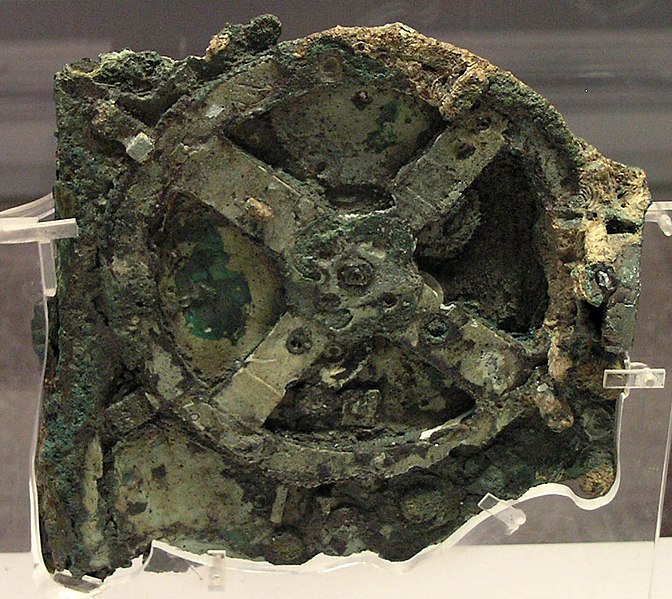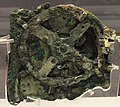Файл:NAMA Machine d'Anticythère 1.jpg


Повна роздільність (1036 × 924 пікселів, розмір файлу: 207 КБ, MIME-тип: image/jpeg)
Історія файлу
Клацніть на дату/час, щоб переглянути, як тоді виглядав файл.
| Дата/час | Мініатюра | Розмір об'єкта | Користувач | Коментар | |
|---|---|---|---|---|---|
| поточний | 10:48, 20 грудня 2005 |  | 1036 × 924 (207 КБ) | Marsyas | Fragment principal de la machine d'Anticythère. Le mécanisme consiste en un système complexe de 32 roues et plaques portant des inscriptions relatives aux signes du zodiac et aux mois. L'étude des fragments suggère qu'il s'agissait d'une sorte d'astr |
Використання файлу
Такі сторінки використовують цей файл:
- Інженерія
- Історія науки
- Антикітерський корабель
- Антикітерський механізм
- Астраріум
- Астрономія Стародавньої Греції
- Давньогрецькі календарі
- Модель Сонячної системи
- Національний археологічний музей (Афіни)
- Недоречний артефакт
- Підводна археологія
- Користувач:Alex Blokha/Події в Вікіпедії/30 травня
- Вікіпедія:Проєкт:Цей день в історії/17 травня
- Вікіпедія:Проєкт:Чи ви знаєте/Архів рубрики/2010-01
- Вікіпедія:Цей день в історії/Травень
- Портал:Греція/Чи ви знаєте/Архів
Глобальне використання файлу
Цей файл використовують такі інші вікі:
- Використання в ab.wikipedia.org
- Використання в af.wikipedia.org
- Використання в als.wikipedia.org
- Використання в ang.wikipedia.org
- Використання в anp.wikipedia.org
- Використання в an.wikipedia.org
- Використання в ar.wikipedia.org
- Використання в ast.wikipedia.org
- Використання в azb.wikipedia.org
- Використання в az.wikipedia.org
- Використання в bcl.wikipedia.org
- Використання в be-tarask.wikipedia.org
- Використання в be.wikipedia.org
- Використання в bg.wikipedia.org
- Використання в bn.wikipedia.org
- Використання в bs.wikipedia.org
- Використання в ca.wikipedia.org
- Використання в ce.wikipedia.org
- Використання в cs.wikipedia.org
- Використання в cv.wikipedia.org
Переглянути сторінку глобального використання цього файлу.
